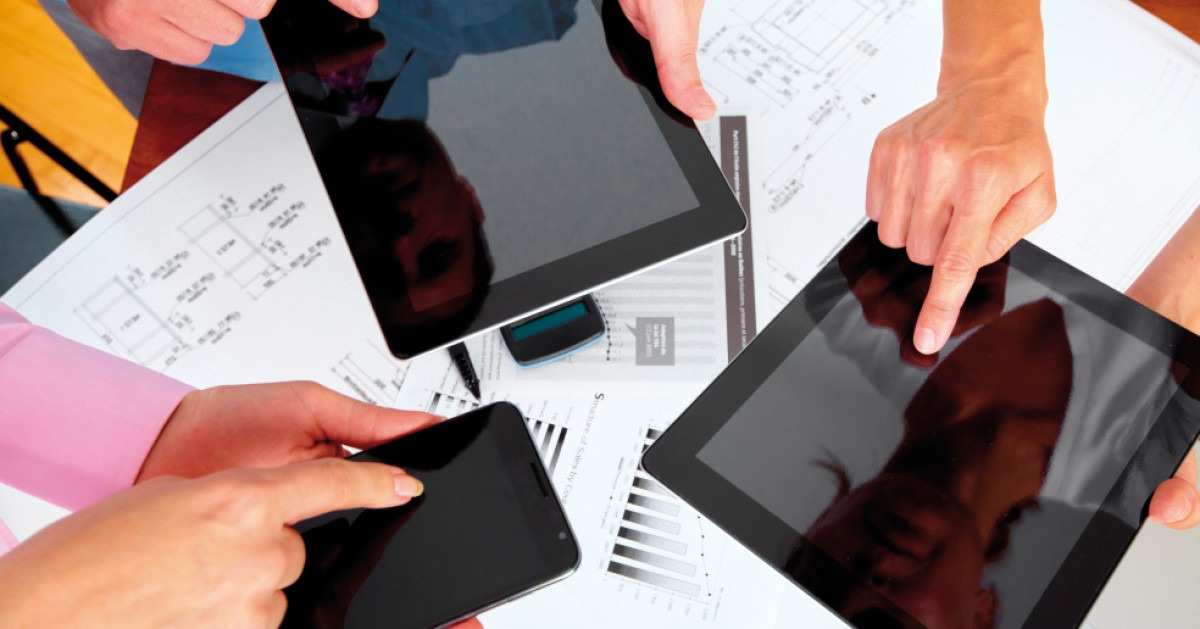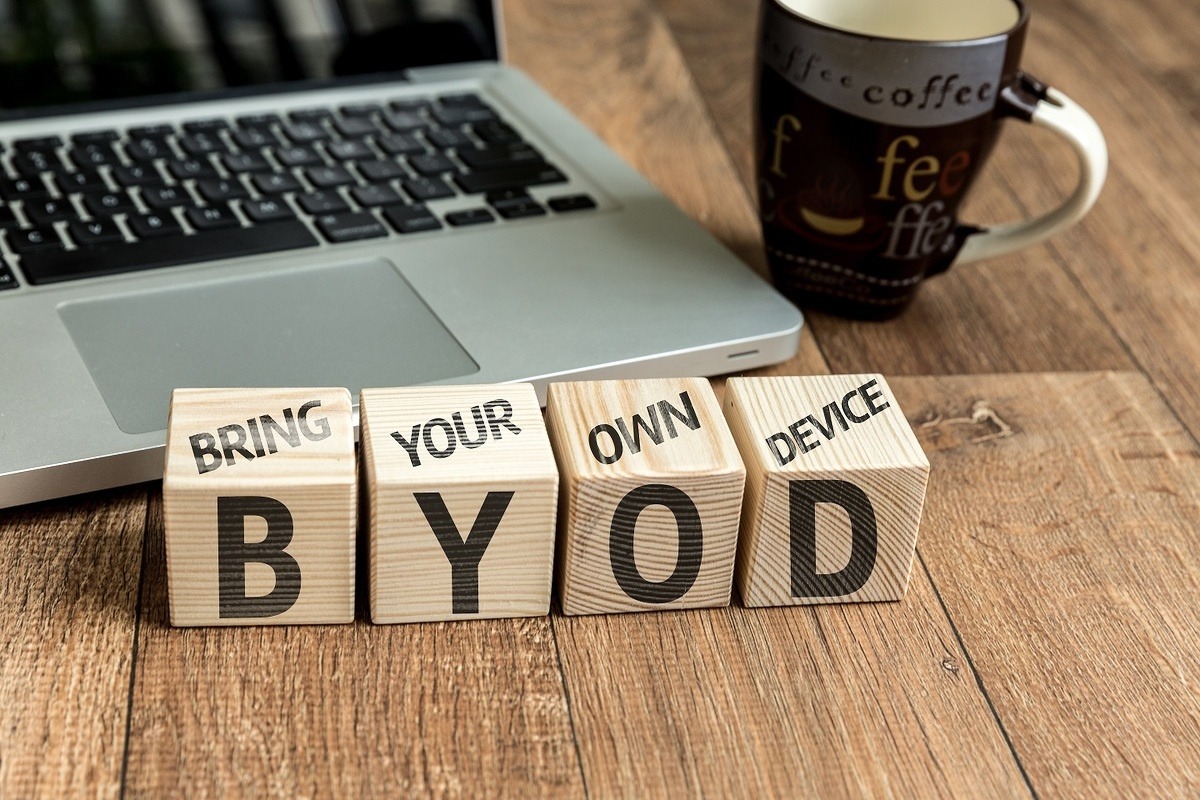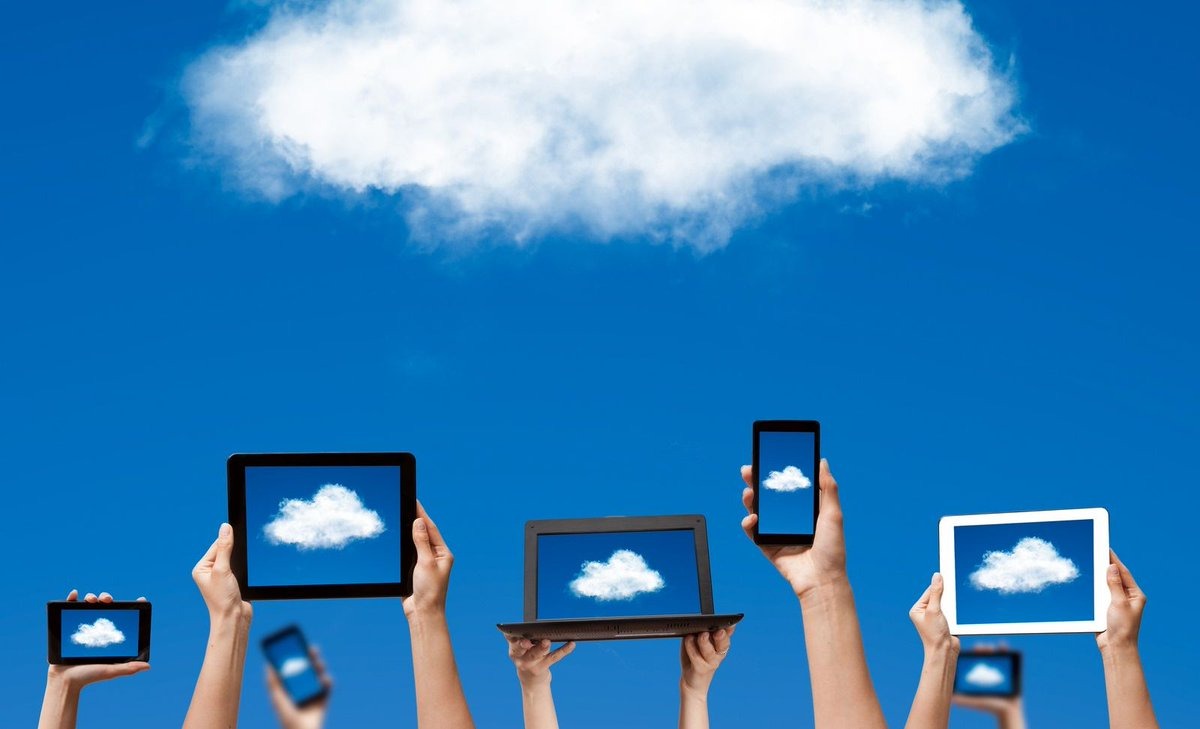In today’s world, almost everyone is walking around with a small computer in their pocket, which has made for some interesting BYOD statistics.
The term “BYOD” is short for “bring your own device.” It pertains to the employees that use their personal smartphones, computers, or tablets for their work duties.
It’s a lot more common nowadays with the rapid evolution of technology, and roughly 75% of employees use their cell phones for work-related tasks.
Although this article will go through many other data points, this tells us that BYOD is quite common.
There are numerous benefits to a BYOD policy, as it can help businesses save on costs and provide a more efficient workflow.
However, it isn’t always a perfect solution, as using personal devices for work could also lead to distractions.
This article will provide ample insight into statistics surrounding BYOD, providing a comprehensive take that’ll catch you up to speed on the practice.
Post Contents
Key Statistics
- Data taken prior to Covid-19 shows that 75% of the workforce in the U.S. use their cell phones for work
- 66% of employees use their smartphones for various job-related tasks
- 80% of employers believe mobile phones are essential for employees to do their jobs
- The average employee uses about 2.5 devices to manage their workflow
- 61% of employers expect their workforce to be reachable away from the office
BYOD Statistics in 2024: The Rise of BYOD

Any employer can assume that each of their employees at least has a cell phone on them at all times.
Some others have a laptop with them on a daily basis, and this has opened up a few beneficial opportunities.
Not only are employees more comfortable using their own devices, but it helps to reduce costs on equipment.
It’s also known that modern devices can all partake in necessary applications that help keep the business and its employees organized.
1. What are the Benefits of BYOD?
The implementation of BYOD isn’t necessarily a new concept, and a lot of these statistics span the course of years.
For example, since 2013, companies that exercise a BYOD policy have earned an additional $350 per employee on a yearly basis.
It’s important to keep in mind that this is an average, and these earnings a guaranteed to vary based on several factors.
Aspects like the terms of the policy, the output of the employee, and the industry all play a part in this statistic.
In a survey from 2016, data shows that a BYOD policy can also help increase productivity levels.
Respondents to this survey demonstrated a 34% increase in productivity with employees who were allowed to use their own cell phones for work.
As mentioned earlier, cost savings are also a benefit of BYOD.
Many companies have saved roughly $250 per employee per two-year contract.
This figure is primarily seen in companies with around 500 employees, and it tends to decrease as the company expands.
However, the number can be higher if an employer doesn’t provide a stipend.
(Zippia)
2. Stats on BYOD Policy
Some employers require employees to follow specific security policies when using a mobile device for work.
51% of employees attest to this, and 37.9% mention their employers don’t have policies to secure their devices. Around 11.1% are unsure if their employer has any policy in place at all.
There’s an incentive for workers to use their own devices, as 71% of companies offer a stipend to cover part of the employees’ cell service plans.
Not only can this be cheaper for the company, but it lifts some restrictions for employees that are worried about their monthly bill.
Around 83% of organizations allow BYOD for at least a portion of their workforce.
Not all departments need to have a mobile device on hand to do their work.
However, there are other areas of work that require both a cell phone and a laptop to get the job done.
Other data points related to this statistic include:
- 17% of companies provide devices for their entire workforce
- 28% provides a phone for around 20% of employees
- 24% offer devices to less than 20% of employees
- 31% of businesses don’t provide mobile devices to any of their workers
Although BYOD policies are becoming more common in certain job titles, departments, and industries, many employers still don’t see a need for it in their particular field.
Most of these statistics primarily focus on the employer’s perspective.
If you take a look at BYOD from an employee standpoint, this will provide an entirely different set of statistics.
(Zippia)
3. BYOD and Employees
The workforce has varying sentiments toward BYOD.
While many appreciate the implementation of a BYOD policy, others don’t really see the benefit.
A lot of this comes down to the exact nature of their workflow, as it simply isn’t needed in every scenario.
Nevertheless, employees participating in BYOD is still more common than you might think.
- 80% of employees would much rather have separate personal and work devices
- 31% of employees enjoy using their personal devices for work
- 28.1% of employees choose to use their own device as it’s generally higher quality than what the company provides
- 29.3% of employees use their devices for work simply because their employer doesn’t offer a work device
- 85% of employees mention their employers pay money to secure their company devices. In contrast, 49% say their employers pay to secure the personal devices they use for work.
It’s evident there isn’t just one way to utilize a BYOD policy, and many employees have their own preferences on the matter.
The benefits that come from utilizing BYOD are relatively broad, but what many employers like about it is that there are numerous upsides regarding overall productivity.
(Zippia)
4. Productivity Speaks for Itself
There’s plenty of data to support how a BYOD policy can help improve productivity, but it goes much deeper than that.
42% of respondents for this statistic using a smartphone for work can help increase the speed of innovation in the workplace.
A close second, 41% of respondents find smartphones to provide much greater flexibility when it comes to their daily workflow.
Better yet, over one-third of employees working with a BYOD policy believe it offers a much better work-life balance.
Overall collaboration and productivity see significant improvement based on 39% of employees.
Regarding 35% of these employees, they feel the quality of their work sees an improvement as well.
A BYOD policy isn’t always sunshine and rainbows, as organizations and employees alike express concerns regarding security.
(Samsung)
5. The Importance of Security
Although many people on both sides of the corporate world are satisfied with BYOD, there are some ongoing security concerns.
However, that doesn’t mean there aren’t measures in place to keep organizations and their employees safe.
52% of respondents mention that data security is a top concern with BYOD policies.
This is especially true when it comes to regulated industries. 46% of companies that offer a BYOD policy use encryption to minimize security risks.
It should be highlighted that around two-thirds see security risks caused by partners and employees to be relatively significant.
In 43% of companies exercising BYOD, VPNs are used to help enhance security across the board.
On top of that, authentication methods are used by 38% of organizations with a primary focus on data protection.
This all may sound rock solid, but it isn’t impenetrable by any means.
BYOD policies work great with proper management and security of all devices involved.
(Samsung)
Development of the Enterprise Mobility Market
BYOD is more than just employees wanting access to their personal devices at work, it’s an entire industry of its own, and it’s growing.
As more companies wake up to the benefits of BYOD, they’ll continue to implement their own unique policies to make it work for their needs.
You’d be surprised at how much money a BYOD policy can bring to a company and the long-term positive effects that come with it.
6. The BYOD Market by 2026
Data shows that the market for BYOD is growing with each passing year.
It’s expected that by 2026, the enterprise mobility market could reach $157.3 billion. This is a jump of 16.7% from 2022 to 2026.
You’ll also want to consider that the price of mobile technology is also expected to increase.
More specifically, the value of devices should see an increase of 15.4% which will lead to $82.4 billion by 2026.
At this time, 59% of organizations make use of BYOD, and you can add 13% as more companies are preparing to adopt the policy.
Companies that switch from an employer-provided device (EPD) policy to BYOD can save roughly 11% every two years.
The average BYOD employee spends about $965 on their mobile device, whereas companies using an EPD policy spend around $1,415 per employee.
Most people also hold onto their mobile devices for years or simply upgrade down the road. In turn, organizations enjoy the cost savings in the long term.
(TechJury)
7. BYOD is Aiding Mobile Growth in the Workplace
You’ll find that BYOD is more common in some industries compared to others.
On a global scale, leaders in the IT space, from large to midsize companies, support the use of BYOD in some shape or form.
69% of these IT professionals also view BYOD as relatively or extremely positive on employees and organizations.
Many of the statistics in this article have focused on data within the United States, when in reality, BYOD is being adopted all over the world.
47% of employees that were interviewed on this topic are designated as mobile workers.
Even if an employee is not titled as a “mobile worker,” around 60% of workers use a mobile device for some aspect of their job.
In the table below, you can see the percentage of employees who are designated mobile workers and who use their phones for work in general.
| Country | Designated Mobile Worker | Use Cell Phone for Work |
| United States | 58% | 67% |
| United Kingdom | 47% | 58% |
| Germany | 42% | 50% |
| France | 40% | 52% |
| Russia | 37% | 55% |
| China | 44% | 59% |
| India | 51% | 69% |
| Mexico | 48% | 63% |
| Brazil | 46% | 57% |
| Total | 47% | 60% |
It’s pretty clear that designated mobile workers are on the rise.
You can expect that most people use their cell phones in some capacity at work, but this doesn’t make them designated mobile workers.
Those who essentially rely on their mobile device to do their job fall into this category.
Nevertheless, these statistics show that BYOD is being utilized worldwide, as organizations clearly see the benefit of using such a policy.
(Cisco)
8. What are the Potential Downsides?

Integrating a BYOD policy into an organization isn’t necessarily free of risks.
Only 14% of organizations have a preferred mobile security app that their employees can use.
That opens up a lot of risks for data security concerns, and some companies simply don’t seem to care too much.
However, other companies find security to be the primary barrier to the adoption of BYOD policies.
From stolen devices, data breaches, and unprotected Wi-Fi networks, there’s plenty of reason to invest in ample security measures.
72% of companies find that data leaks are a top concern, with 56% of companies worrying about unauthorized access to company data.
54% of organizations have also cited that they worry employees will download unsafe content and applications to their personal devices.
These concerns are warranted when you consider the types of theft that are always at play.
It’s known that IT theft in the workplace is sitting at 23%, and 34% of employees end up being the thieves in this scenario.
To help put a seal on security, 56% of companies with BYOD policies use remote wipe and MDM to maintain primary control.
This section focuses on the what if’s, but there are plenty of examples where BYOD backfired when it was least expected.
(TechJury)
BYOD Isn’t a Flawless System
There have been a few instances when BYOD didn’t go as planned for some businesses.
Back in 2012, a doctor’s personal laptop was stolen, and it contained the information of all his patient’s personal data.
Once word got out about the incident, the company the doctor worked for had to pay a massive fine of $1.5 million.
This is all because a single laptop was stolen.
Now think about this same scenario but with numerous employees using their personal devices however they please without security measures.
The losses could be catastrophic, to say the least.
For another example, we can take a look at a CEO who let his daughter use his personal work phone.
The CEO’s daughter happened to enter in the wrong pin code five times in a row.
This triggered the remote wipe integration, which ended up deleting all of his vacation photos.
Although this isn’t as bad as a $1.5 million fine, it still highlights some of the drawbacks of BYOD and related security measures.
(TechJury)
9. Varying Level of Integration for BYOD
Depending on the size of the company, BYOD may be implemented at varying levels.
A midsize company may not need BYOD as much as an enterprise due to everything it takes to keep daily operations going.
Employee numbers also play a part in this.
The table below shows the difference in the areas covered by both midsize and enterprise organizations.
| Areas Covered | Midsize Companies | Enterprises |
| Network access | 41% | 50% |
| Privacy rules | 41% | 47% |
| Transmission of company data | 38% | 47% |
| User support | 36% | 42% |
| Acceptable use | 36% | 41% |
| Legal liability | 35% | 36% |
| Loss/damage to the device | 32% | 37% |
| Procurement | 29% | 37% |
| Use of nonapproved devices | 28% | 31% |
| Guest network access | 27% | 33% |
| Departmental charge-back | 25% | 29% |
| Reimbursement | 24% | 33% |
It’s understandable why enterprises would have more investment in all of these areas.
In short, they have more need for BYOD policies and security.
Companies are also discussing what they’re able to manage when it comes to employees’ personal devices.
There has to be some level of control in BYOD policies, and organizations offer varying sentiments and concerns on this topic.
10. The Use of Nonapproved Applications
Another aspect businesses have to consider is the use of nonapproved applications.
Considering BYOD entails the use of personal devices, employees are bound to have many personal items on their devices.
This could potentially lead to disorganization as employees use any app they choose to manage their workflow.
Most organizations like to keep things uniform and concise, but this can be challenging to enforce with a BYOD policy.
52% of IT leaders report an increase in nonapproved applications and cloud services in the workforce. This is compared to two years prior.
From an employee standpoint, this route is a preference, as each person has their own set of applications or cloud services they like over others.
From collaboration, presentation, and data analysis, employees are using a broad range of applications to get the job done.
Although most employees don’t mind this, business leaders don’t always feel the same.
One could also argue that leaders should adapt, as a BYOD policy has a personal touch on every device that’s being used.
Below, you can find the percentages of companies that are finding nonapproved applications and services to become increasingly prevalent.
| Country | Increased Prevalence of Nonapproved Applications |
| United States | 66% |
| United Kingdom | 38% |
| Germany | 29% |
| France | 27% |
| Russia | 16% |
| China | 71% |
| India | 62% |
| Mexico | 66% |
| Brazil | 62% |
| Total | 52% |
As with many other aspects of BYOD policies, nonapproved applications have pros and cons.
It can be a logistical headache for business owners, but employees would argue it makes them more efficient at their job.
Overall, there are some kinks that need to be worked out in the BYOD market, but it’s something that’s becoming more common on a global scale.
When we look into the future of BYOD policies, there are a few statistics on trends and expectations as well.
(Cisco)
11. Future BYOD Trends and Predictions

There have been many changing trends in work culture since the Covid-19 pandemic came about.
Roughly 58.3% of surveyed employees mentioned the use of their personal devices has increased since the pandemic.
On the other hand, 30.6% said the pandemic had no effect on their use, while around 11% said they actually use their personal devices less.
Industry experts predict that 30% of organizations in the IT industry will eventually extend their BYOD policies to include wearable technology.
Smartwatches have been around for quite some time, but they come with many integrations that coincide with smartphones.
Of course, another hot topic is that the value of the BYOD market is expected to increase quite a bit over the years.
It isn’t something that’ll be going away, as BYOD policies are becoming a preference for a large chunk of the workforce.
Although some employers may be on the fence about using this policy, the benefits are clear as day.
If organizations are able to find a surefire way to secure company data from every angle, we’re likely to see adoption rates increase even more.
It’s a space that still comes with a lot of unknowns, but BYOD policies have increased employee satisfaction, productivity, efficiency, profits, and reduced costs at the same time.
As time moves forward, you’ll likely see some of these predictions change, as it’s possible for the BYOD market to be worth much more than projected in just a few years time.
(Zippia)
Final Thoughts
Whether you use a BYOD policy yourself or you’re brand new to the concept, it’s a workflow that’s taking companies by storm worldwide.
Some countries have adopted the policy quicker than others, but savvy organizations are looking for the best way to integrate it into their business.
The benefits are proven on a large scale, but there are still a few downsides that need to be worked out before we see mass adoption.
This article highlighted many BYOD statistics to shine a light on the rising prevalence of this policy in the modern workforce.






























